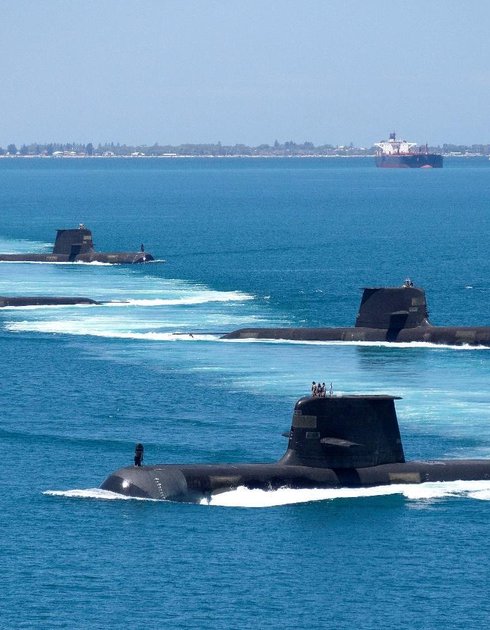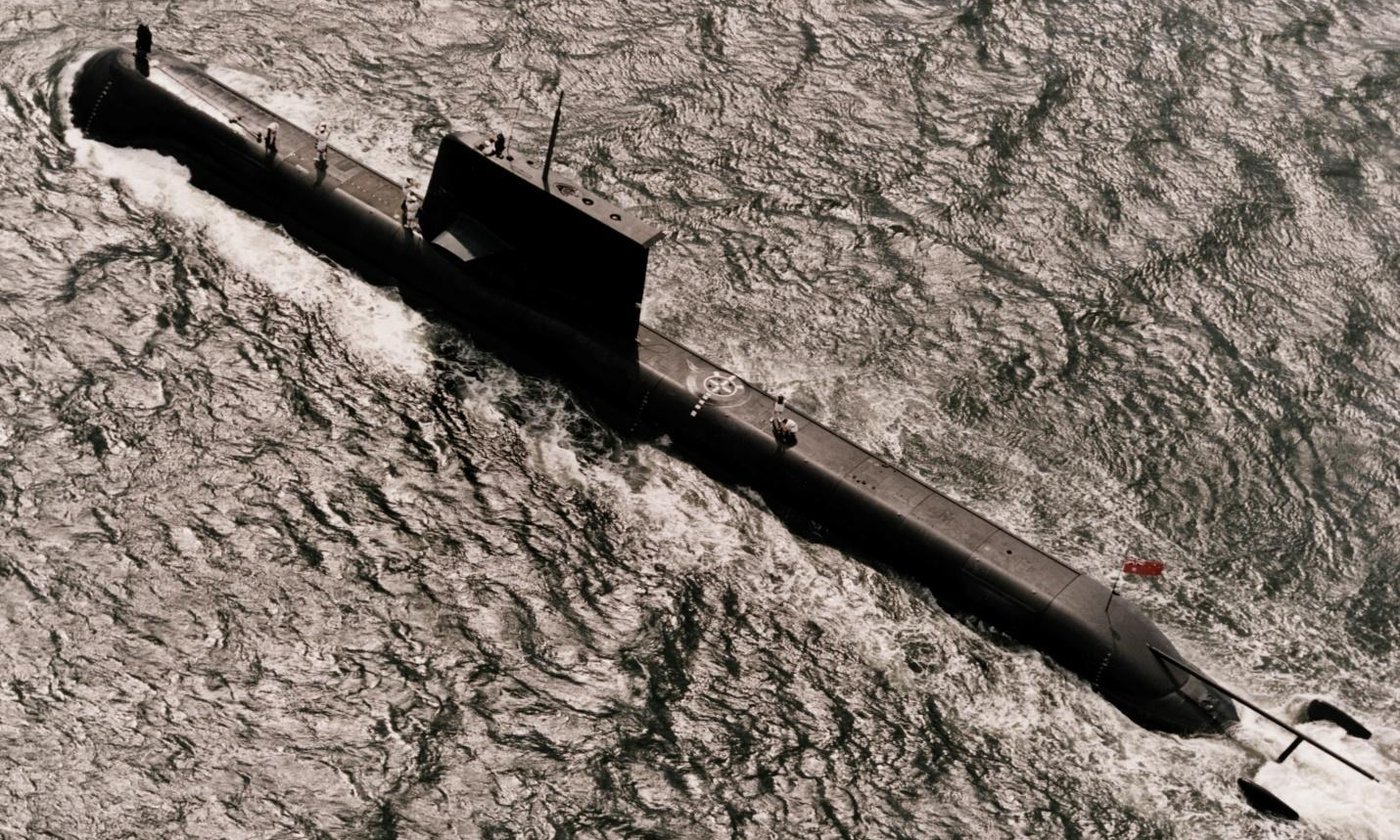Collins Class
One of the first submarines to be totally designed by computers

Image provided by Royal Australian Navy
The characteristics and range of Collins class submarines have been tailored specifically for its defence and two-ocean surveillance role in the Royal Australian Navy. Designed to be as quiet as advanced technology can achieve, Collins class submarines have been developed from five generations of submarines designed and built by the Swedish Navy.
One of the first submarines to be totally designed by computers, these submarines boast a vast range of features. They include a high-performance hull form, highly automated controls, low indiscretion rates, high shock resistance, efficient weapons handling, and an optional air-independent propulsion system.
The submarines move silently on electric power supplied by banks of new-technology lead-acid batteries. The batteries are charged by three on-board diesel generator sets.
The sophisticated combat system, which gathers its intelligence from its sensors, computes the input and then launches and directs weapons, is an advance on any system currently available. Referred to as AN/BYG-1(v)8, it is the result of an Armaments Cooperative Program (ACP) between the navies of Australia and the US.
Each ship has been named after a distinguished former member of the RAN, some of whom have made the ultimate sacrifice for their country.
Based at HMAS Stirling (https://www.navy.gov.au/about-navy/bases-and-locations/hmas-stirling) in Western Australia, they are a formidable element in Australia's defence capability.
The Collins Class project was established by the Royal Australian Navy (RAN) in 1982
Replacing the RAN's Oberon Class, the new design was required to meet the unique needs of the Navy, which were dictated by, among other things, Australia's geographic location.

Image provided by Royal Australian Navy